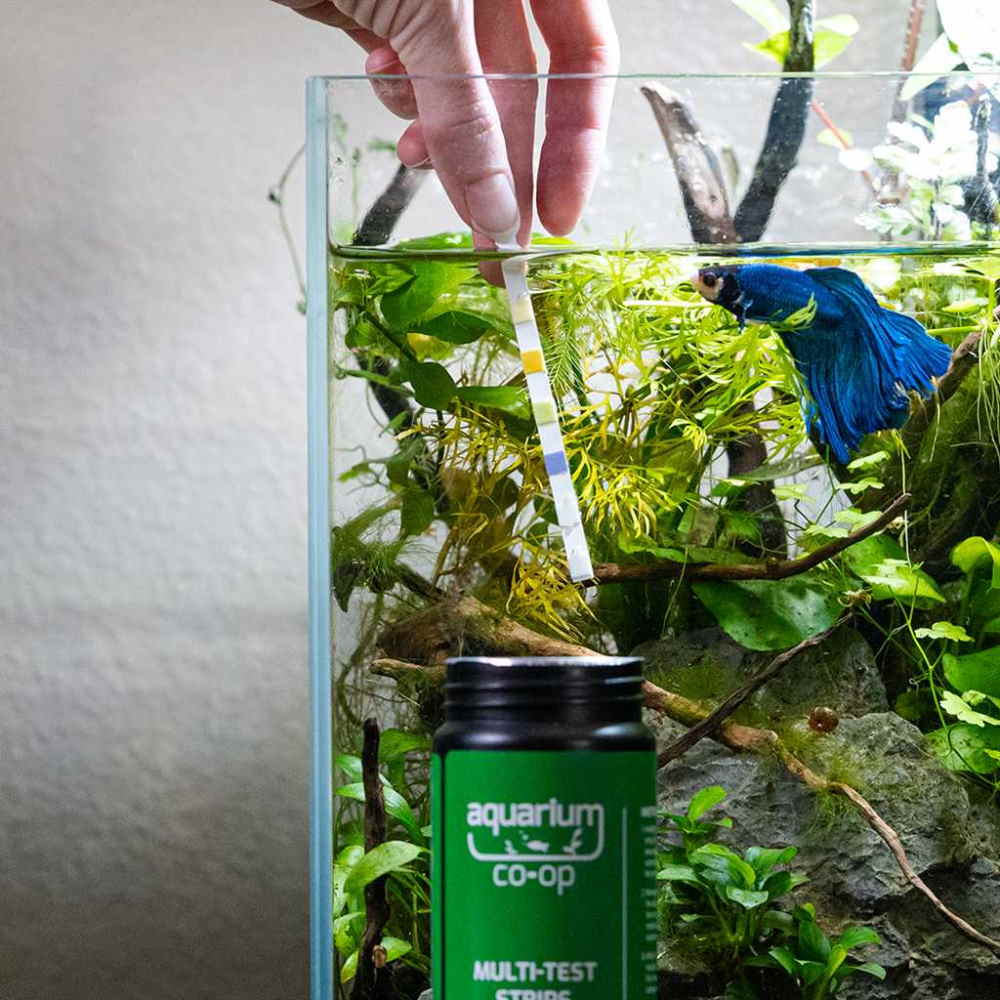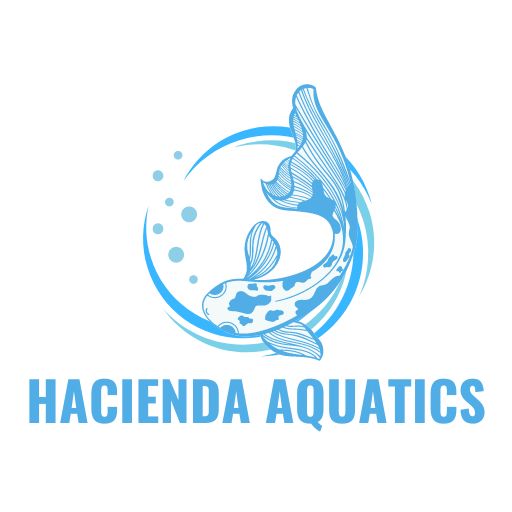Aquatic Knowledge
How to reduce nitrates in aquarium: a comprehensive guide to maintaining healthy water quality
Maintaining a healthy aquarium environment is crucial for the well-being of your fish and aquatic plants. One of the key factors in keeping your tank healthy is managing the nitrate levels. High nitrate levels can lead to a variety of problems, including poor fish health, algae blooms, and an overall decline in water quality. In this guide, we’ll dive deep into how to reduce nitrates in an aquarium and ensure your aquatic environment remains thriving.
What Are Nitrates and Why Are They a Problem?

Nitrates are a type of nitrogen compound found in aquariums, formed through the breakdown of waste products like fish waste, uneaten food, and decaying plant matter. While nitrates are less toxic than ammonia and nitrites, they can still pose a risk to your aquarium’s health if allowed to accumulate.
How Nitrates Affect Aquatic Life: High nitrate levels can stress fish, making them more susceptible to disease, and can stunt plant growth. Over time, excessive nitrates can lead to algae blooms, turning your pristine tank into a murky green mess.
Identifying Nitrate Levels
- Testing for Nitrates: The first step in managing nitrates is knowing your current levels. Use a reliable aquarium test kit to measure nitrate concentrations. Regular testing helps you track changes and address issues before they become serious.
- Recommended Nitrate Levels: For most freshwater aquariums, keeping nitrate levels below 20 ppm (parts per million) is ideal. For more sensitive species, such as certain fish or invertebrates, even lower levels may be necessary.
Causes of High Nitrate Levels
- Overfeeding: Feeding your fish too much can lead to uneaten food decomposing in the tank, which significantly contributes to nitrate levels. Stick to feeding only what your fish can consume in a few minutes.
- Overstocking: Having too many fish in your tank increases waste production, which in turn raises nitrate levels. Ensure your tank is appropriately stocked according to its size and filtration capacity.
- Inadequate Filtration: A poor filtration system can’t effectively process the waste in your tank, allowing nitrates to build up. Regularly check and maintain your filter to ensure it’s working efficiently.
How to Reduce Nitrates in Aquarium: Key Methods

Regular Water Changes
The most effective way to reduce nitrates in an aquarium is through regular water changes. When you perform a water change, you’re removing a portion of the nitrate-rich water and replacing it with fresh, clean water. This dilutes the nitrate concentration, making the environment safer for your fish.
How to Perform Water Changes
- Frequency: Aim for weekly water changes, replacing about 10-20% of the water each time.
- Tools: Use a gravel vacuum to remove debris from the substrate, which can contribute to nitrate levels.
Adding Live Plants
Live plants naturally absorb nitrates as they grow, helping to lower nitrate levels.
Best Plants for Reducing Nitrates
- Floating Plants: Duckweed, water lettuce, and hornwort are excellent for nitrate absorption.
- Rooted Plants: Amazon swords, java fern, and anubias are also great choices.
Plant Care Tips
- Lighting: Ensure your plants receive adequate light to thrive.
- Fertilization: Use liquid fertilizers sparingly, as some can increase nitrate levels.
Improving Filtration
Your aquarium’s filtration system plays a vital role in maintaining water quality and reducing nitrates.
Choosing the Right Filter
- Biological Filtration: Filters with biological media help break down nitrates more effectively.
- Chemical Filtration: Products like activated carbon and specialized nitrate removers can further reduce nitrates.
Maintaining Your Filter
- Regular Cleaning: Clean your filter media as recommended by the manufacturer to keep it functioning optimally.
- Media Replacement: Replace filter media periodically to maintain effective filtration.
Controlling Feeding Habits
Overfeeding is a common cause of high nitrate levels. Uneaten food decays, leading to an increase in nitrates.
Proper Feeding Techniques
- Portion Control: Feed your fish only what they can consume in a few minutes.
- Frequency: Consider feeding smaller amounts more frequently rather than one large meal.
Using Quality Food
- High-Quality Food: Invest in high-quality fish food that’s less likely to produce excess waste.
- Avoid Overfeeding: Always be mindful of not overfeeding, as this is a leading cause of excess nitrates.
Using Nitrate-Reducing Products

Several products on the market can help reduce nitrate levels in your aquarium.
Nitrate-Absorbing Media
- Specialized Media: Products like Seachem’s Purigen or API’s Nitra-Zorb can be added to your filter to absorb nitrates.
- Maintenance: Regularly replace or recharge these products to keep them effective.
Nitrate-Removing Chemicals
- Liquid Solutions: Some chemical treatments are available that neutralize nitrates, but they should be used with caution to avoid upsetting the tank’s balance.
Adding a Refugium
A refugium is a separate area connected to your aquarium that can house additional plants or algae, which help reduce nitrates.
Setting Up a Refugium
- Size and Placement: Choose a size appropriate for your aquarium and position it where it receives adequate light.
- Plant Selection: Use fast-growing plants or macroalgae like chaetomorpha to absorb nitrates efficiently.
Benefits of a Refugium
- Natural Filtration: A refugium can significantly improve water quality by providing additional biological filtration.
- Safe Haven: It can also serve as a breeding ground for beneficial organisms that help maintain tank health.
Managing Stock Levels
Overcrowding in your aquarium can lead to increased waste and higher nitrate levels.
Proper Stocking Practices
- Follow Guidelines: Stick to recommended stocking levels based on your aquarium’s size.
- Monitor Growth: As your fish grow, consider rehoming or upgrading to a larger tank to maintain a healthy environment.
Avoiding Over-Cleaning
While it might seem counterintuitive, over-cleaning your aquarium can disrupt the natural balance and lead to higher nitrate levels.
Maintaining Beneficial Bacteria
- Leave Some Algae: Not all algae is bad; some can actually help absorb nitrates.
- Cleaning Schedule: Stick to a regular but not overly aggressive cleaning schedule to avoid disrupting the beneficial bacteria in your tank.
Conclusion
Maintaining low nitrate levels is crucial for a healthy and thriving aquarium. By implementing the strategies outlined above, you can effectively manage and reduce nitrates, ensuring a safe environment for your fish and plants. Remember, the key to success is consistency—regular maintenance and monitoring will keep your aquarium in top condition.
FAQs
How often should I test for nitrates? Testing for nitrates should be done weekly to monitor levels and make necessary adjustments promptly.
Can high nitrates kill my fish? Yes, high nitrate levels can stress and harm fish, leading to disease and even death if not addressed.
What is the best nitrate remover? While there are many nitrate remove
